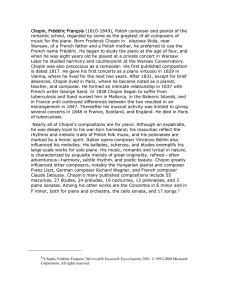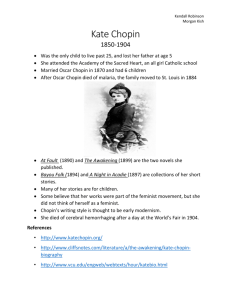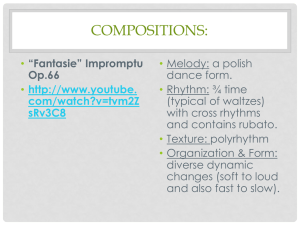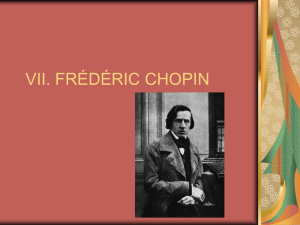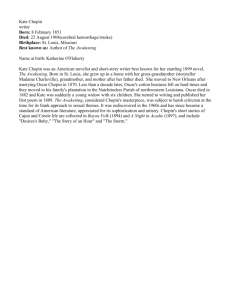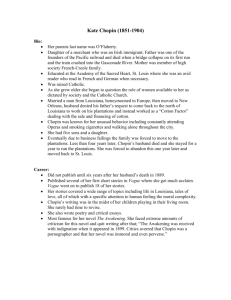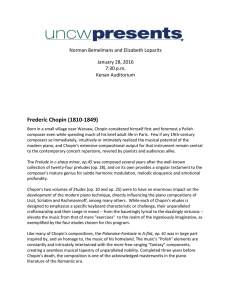The program today pays homage to the past, just as I celebrate my
advertisement
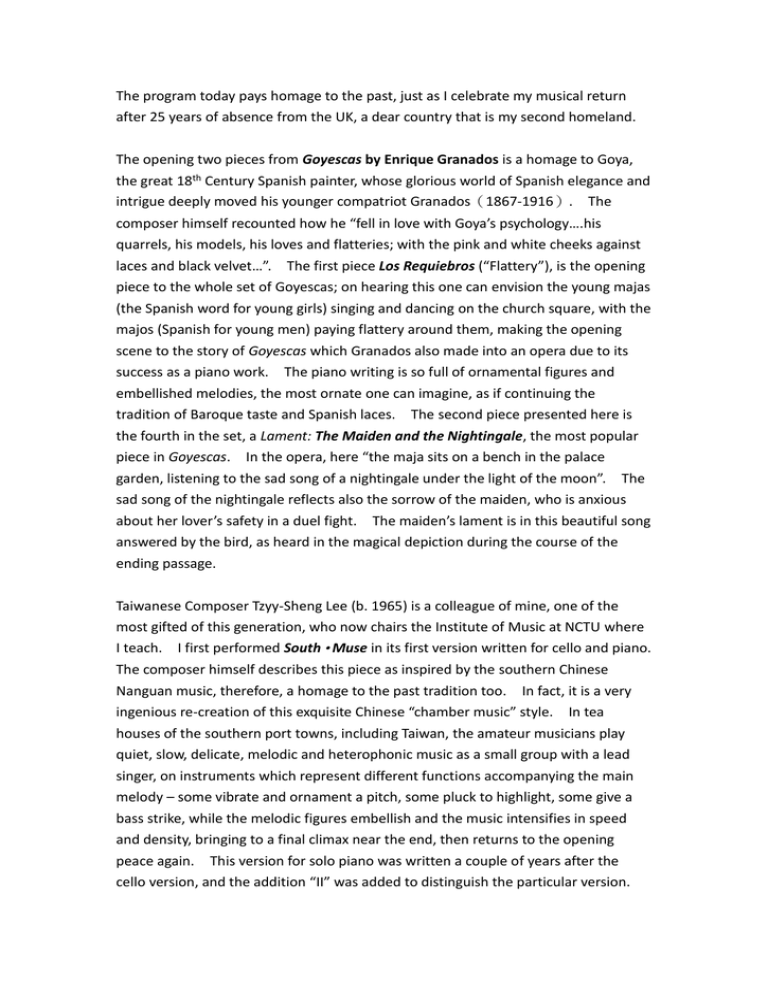
The program today pays homage to the past, just as I celebrate my musical return after 25 years of absence from the UK, a dear country that is my second homeland. The opening two pieces from Goyescas by Enrique Granados is a homage to Goya, the great 18th Century Spanish painter, whose glorious world of Spanish elegance and intrigue deeply moved his younger compatriot Granados(1867-1916). The composer himself recounted how he “fell in love with Goya’s psychology….his quarrels, his models, his loves and flatteries; with the pink and white cheeks against laces and black velvet…”. The first piece Los Requiebros (“Flattery”), is the opening piece to the whole set of Goyescas; on hearing this one can envision the young majas (the Spanish word for young girls) singing and dancing on the church square, with the majos (Spanish for young men) paying flattery around them, making the opening scene to the story of Goyescas which Granados also made into an opera due to its success as a piano work. The piano writing is so full of ornamental figures and embellished melodies, the most ornate one can imagine, as if continuing the tradition of Baroque taste and Spanish laces. The second piece presented here is the fourth in the set, a Lament: The Maiden and the Nightingale, the most popular piece in Goyescas. In the opera, here “the maja sits on a bench in the palace garden, listening to the sad song of a nightingale under the light of the moon”. The sad song of the nightingale reflects also the sorrow of the maiden, who is anxious about her lover’s safety in a duel fight. The maiden’s lament is in this beautiful song answered by the bird, as heard in the magical depiction during the course of the ending passage. Taiwanese Composer Tzyy-Sheng Lee (b. 1965) is a colleague of mine, one of the most gifted of this generation, who now chairs the Institute of Music at NCTU where I teach. I first performed South‧Muse in its first version written for cello and piano. The composer himself describes this piece as inspired by the southern Chinese Nanguan music, therefore, a homage to the past tradition too. In fact, it is a very ingenious re-creation of this exquisite Chinese “chamber music” style. In tea houses of the southern port towns, including Taiwan, the amateur musicians play quiet, slow, delicate, melodic and heterophonic music as a small group with a lead singer, on instruments which represent different functions accompanying the main melody – some vibrate and ornament a pitch, some pluck to highlight, some give a bass strike, while the melodic figures embellish and the music intensifies in speed and density, bringing to a final climax near the end, then returns to the opening peace again. This version for solo piano was written a couple of years after the cello version, and the addition “II” was added to distinguish the particular version. Chopin’s là ci darem Variations Op. 2 takes its theme from the famous duet “Là ci darem la mano” in Mozart’s famous opera “Don Giovanni”. The famous melody ("There we’ll be hand in hand") was sung by Don Giovanni and Zerlina in the opera when the licentious count seduces the peasant’s fiancée. As a young virtuoso pianist and composer, Chopin presented the performance of this piece on his Viennese debut, showing homage to Mozart as well as the style that he adapted as a young creator at the piano (though the work is really with orchestral accompaniment). It was after reading the score of this Op.2, that Chopin’s German contemporary Robert Schumann, wrote admiringly in his critique: “Hats off Gentlemen, this is a genius!” which became a famous quote that was to introduce Chopin to the Western Europe in his early days. The opening introduction must have been the most stunning to Schumann, a highly innovative operatic fantasy of extensive length and tonal adventure, dreamily preluding the entrance of the popular theme. Each variation displays a different feature and technical demand on the piano, including Chopin’s distinct left hand eloquence and the then popular violin virtuoso Paganini’s bravura skips, now pianistically transferred. It is notable that Chopin strongly refers to the darker side of the opera in the penultimate variation, the adagio in minor, contrasting the tragic section to what follows, a Polonaise that brings the final triumph to the end.

